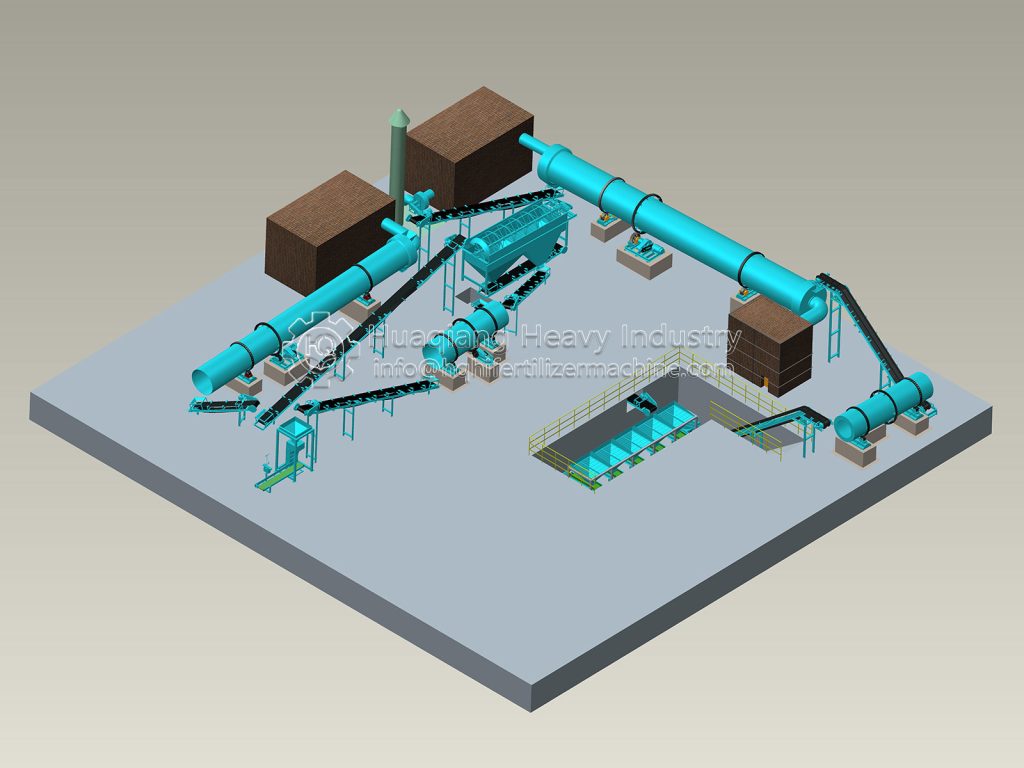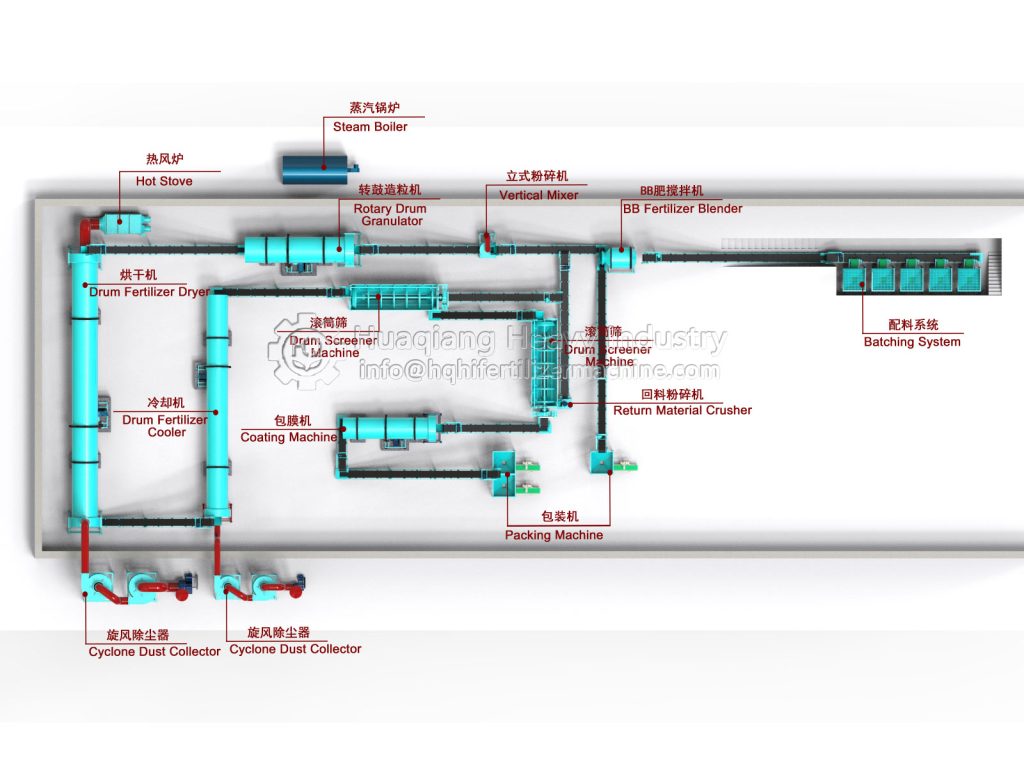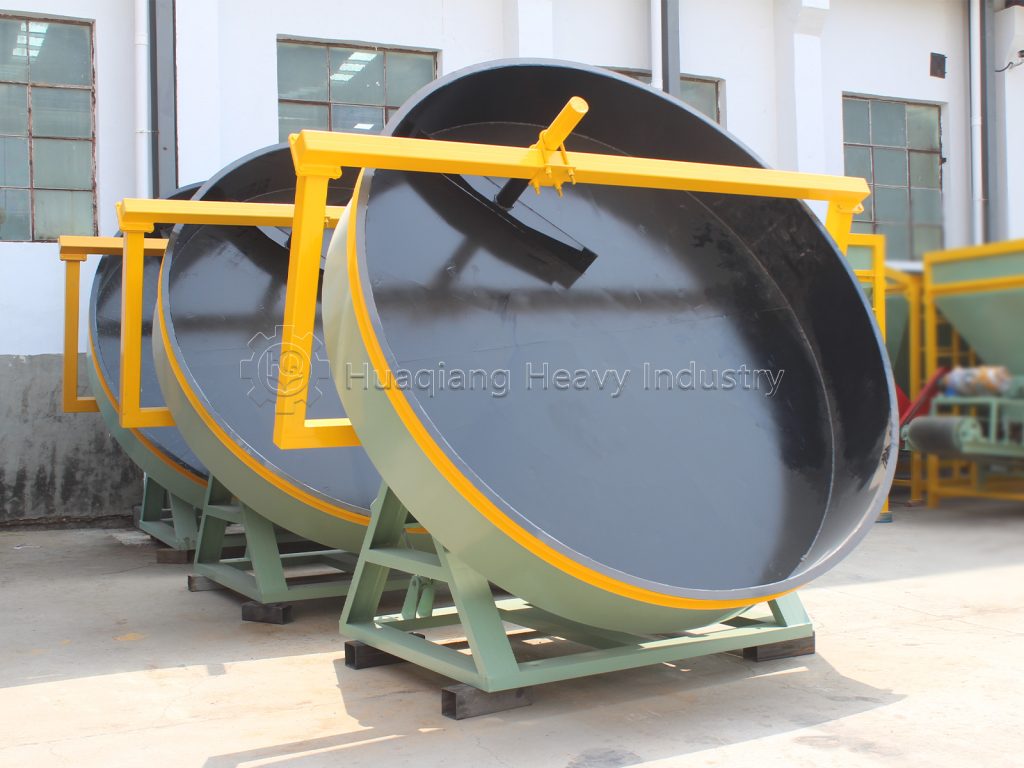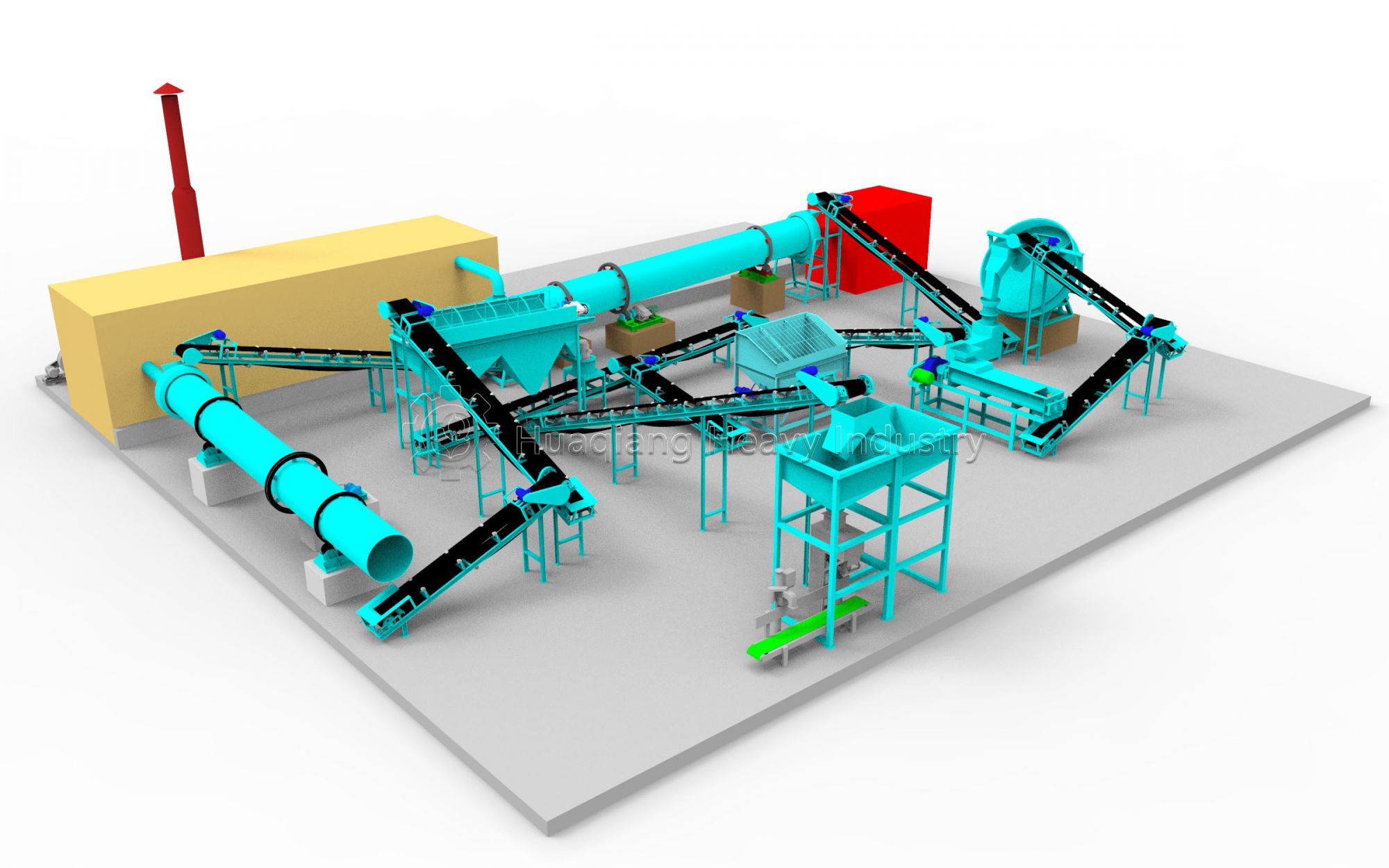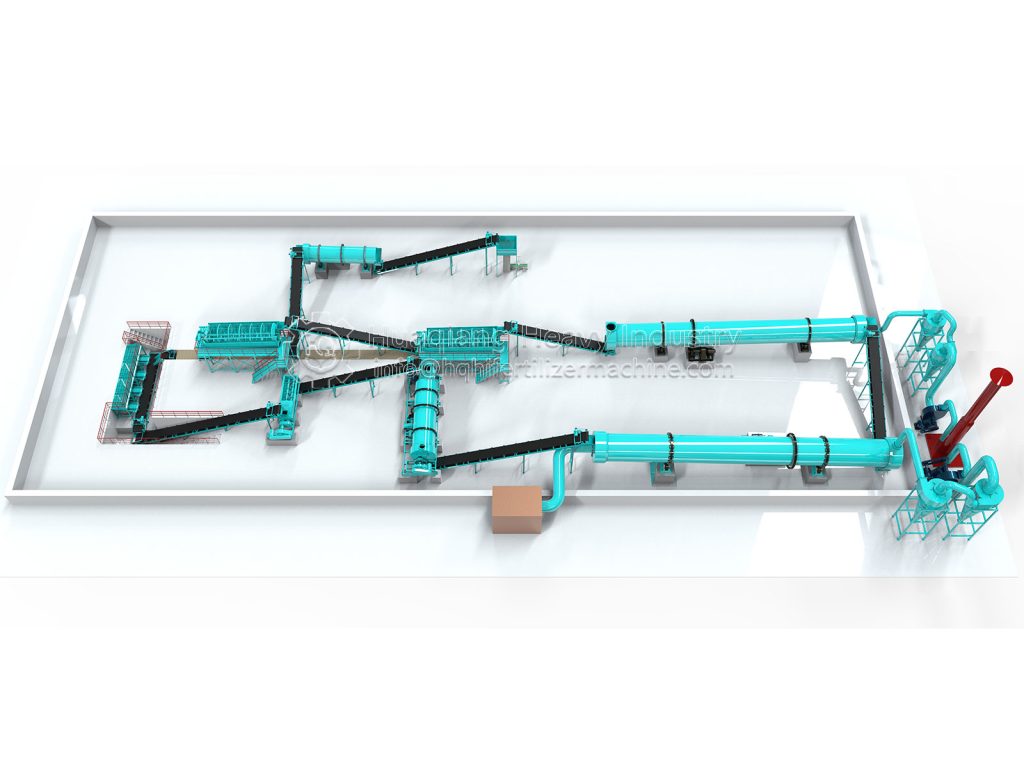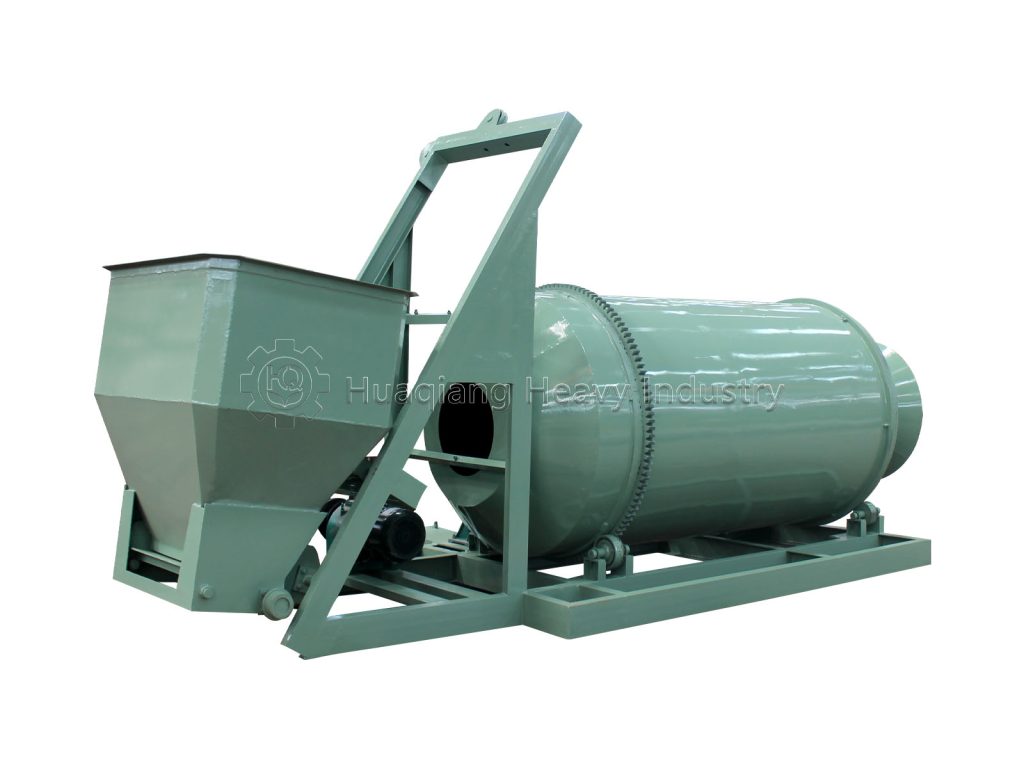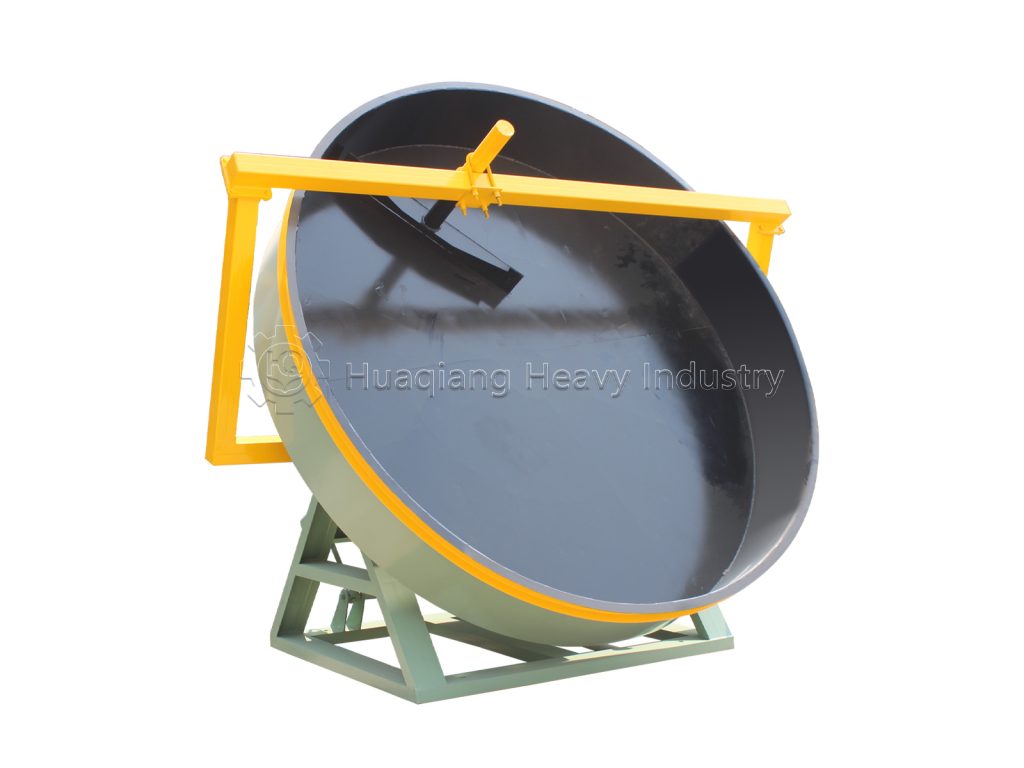Organic fertilizer production lines use scientific processes to transform agricultural and livestock waste into high-quality fertilizer, achieving resource recycling. The entire production process revolves around four core steps: raw material processing – composting – forming – packaging, and each step directly impacts fertilizer quality.
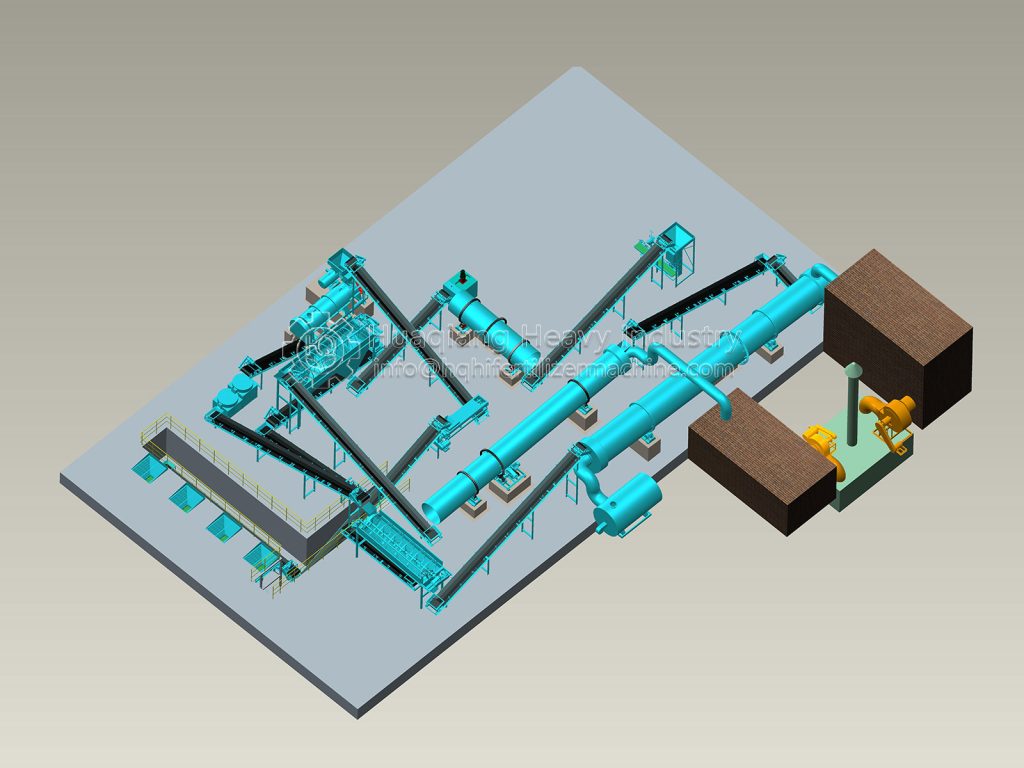
The first step is raw material pretreatment. The production line collects raw materials such as livestock manure, straw, and mushroom residue, and uses screening equipment to remove impurities such as stones and plastic to prevent them from affecting subsequent processes. Next, a crusher is used to pulverize the straw and other coarse fiber materials to a particle size of 5-10mm. The material is then mixed with livestock manure in a ratio of approximately 3:7. A small amount of fermentation inoculant is added, adjusting the carbon-nitrogen ratio to 25:1-30:1 and controlling the moisture content to 50%-60%, laying the foundation for fermentation and composting.
The second step is fermentation and composting. The mixed raw materials are transported to the fermentation workshop and stacked in windrow or tank-type fermentation equipment. During the fermentation process, a compost turning machine regularly turns the material to ensure adequate oxygen and regulate the temperature. The entire fermentation cycle lasts approximately 20-30 days. After composting, the material transforms into a dark brown, odorless humus. It then passes through a cooling device to a temperature below 30°C to prevent nutrient loss during subsequent processing.
The third step is further processing and shaping. The cooled composted material is first crushed to a particle size of 2-3mm in a fine grinder. It is then mixed with a small amount of auxiliary materials such as bentonite and humic acid in a mixer to enhance the fertilizer’s stability. The material then enters the granulation stage, where a rotary drum or disc granulator physically agglomerates the material into 2-5mm granules. The granules are then dried (controlled at 60-80°C) to reduce moisture to below 15%, cooled in a cooler, and screened to separate unqualified particles. The fine powder is then returned to the granulator for reuse.
The finished product is then packaged. Qualified pellets are transported to the packaging workshop, where an automatic packaging machine weighs and seals them into 25kg or 50kg packages, producing finished organic fertilizer.
In short, the organic fertilizer production line, through standardized and mechanized full-process control, efficiently transforms waste into high-quality fertilizer, contributing to environmental protection while providing green nutrients for agriculture.
